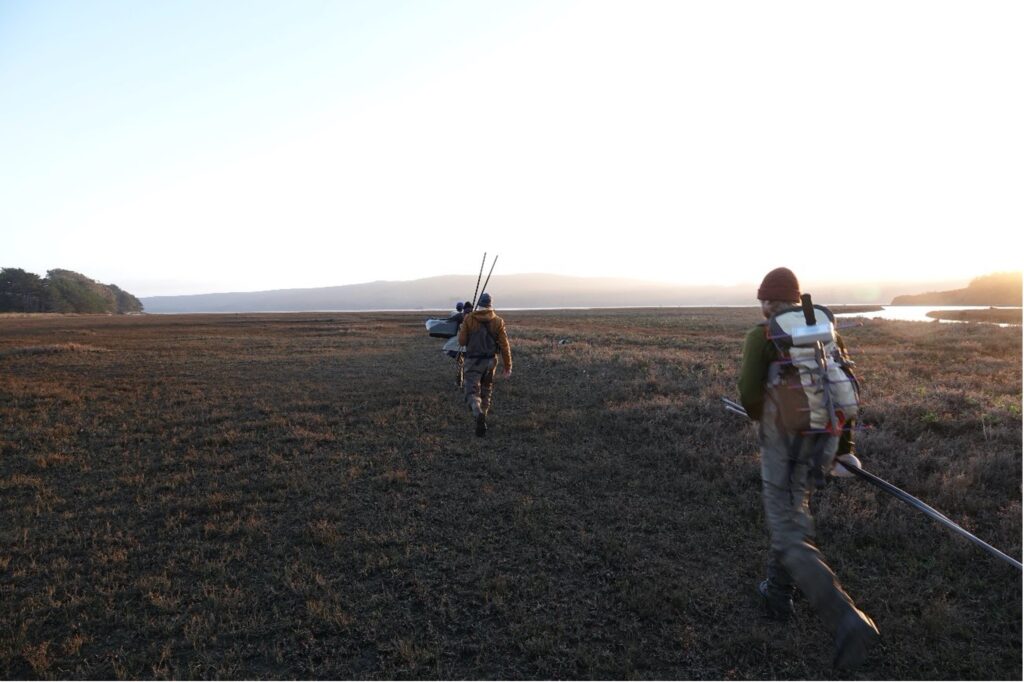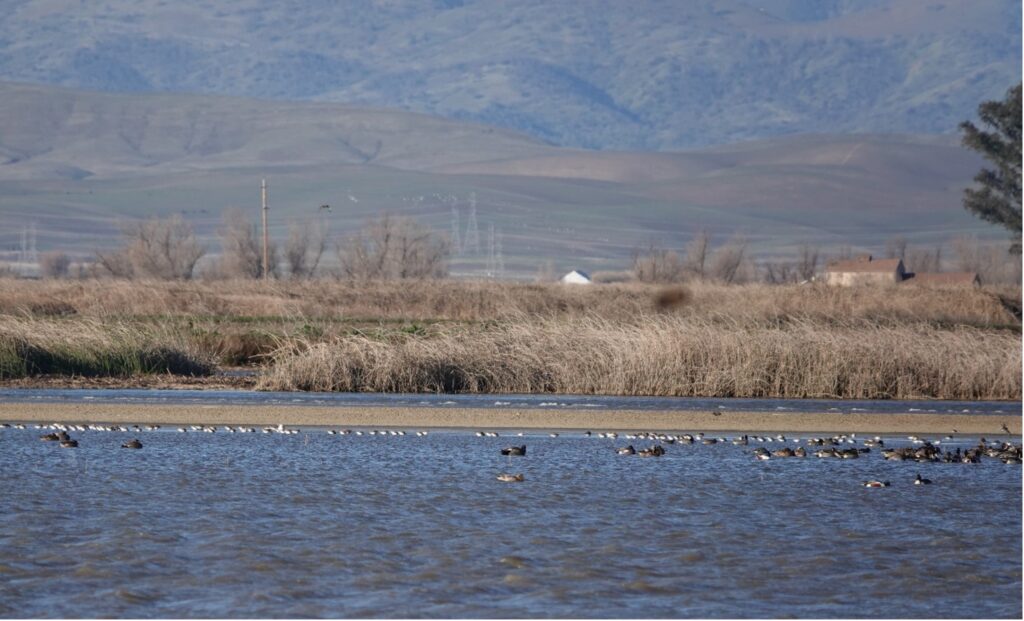Coastal storms pose challenges for mudflat and marsh loving shorebirds
For coastal wintering shorebirds like Dunlin, the storms at the turn of the new year period created difficult conditions. Buffeted by high winds and high water levels, opportunities to feed on mudflats and places to roost on coastal beaches and marshes were limited. We know these conditions will cause Dunlin to move to the interior of California, especially to the Central Valley, but we have not previously collected much data on these movements. This winter, however, we were ready! Since early November, we’ve caught and radio-tagged 30 Dunlin.
Catching shorebirds: How it works
On Tomales Bay, we usually trap shorebirds as the sun sets over the Walker Creek Delta — the single most important shorebird site on Tomales Bay — and a beautiful piece of land that we are fortunate to steward.

We set up a few mist nets out in the marsh where shorebirds come in at dusk to roost. As it gets dark, the birds do not see the fine nets and they get entangled in the folds, from which we gently remove them.

The bird is then brought to our banding site where it is measured and weighed, and we take a small amount of blood. Measurements and blood help us sex the bird and tell us about its condition.

Some of the birds are fitted with Motus radio tags which help us follow the birds as they move around.

Data on each bird are carefully recorded in waterproof notebooks and then transferred to our databases. Each bird is then carefully and quickly released.

Tagged Dunlin travel to the Central Valley
A Motus network of receiving stations on the coast and at strategic locations within the Central Valley listen for radio tags 24/7.
Our partners in this study, Point Blue Conservation Science, The Nature Conservancy, and Audubon California, also tagged Dunlin in the Central Valley. While we did not detect any of the Central Valley tagged birds here in West Marin this winter, we did have at least 7 of the 30 birds we tagged at Tomales Bay move into the Central Valley where this winter’s series of storms has created extensive wetland habitat.

One of our Dunlin, #70463 (its Motus number), has been recorded at four other Motus stations this winter. A female Dunlin that was born this past summer in western Alaska, we caught and banded her in November at the Walker Creek Delta in Tomales Bay. She stayed around Tomales Bay until the end of December when she made a brief trip to Napa-Sonoma Marsh in San Francisco Bay on December 27, and then came back to Tomales Bay the next day, where she remained at least through January 2. Our next location ping from her was on January 5 at a wetland just north of Davis, Calif., followed by a detection on January 7 less than 10 miles north of the Sacramento Airport and then on January 14 at the Colusa National Wildlife Refuge in the upper Sacramento Valley.
We are seeing how important water, and conversely, the lack thereof, is for the winter movements of shorebirds like Dunlin. Dunlin are declining in California — on Tomales Bay, their average winter numbers have dropped from roughly 10,000 individuals in 1989 to only a few thousand — and we are busy trying to understand how water impacts the population dynamics of these small Arctic breeding shorebirds.




